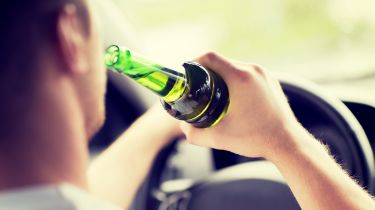What is the drink-drive limit? UK laws explained
Will a cheeky tipple get you into trouble? Here’s all you need to know

Many of us enjoy an alcoholic beverage now and then, but drinking and driving can be an incredibly dangerous undertaking, not to mention a highly illegal one. In order to prevent people from taking to the wheel while intoxicated, the UK has strict drink-driving laws in place.
It’s not just a case of not driving when you feel tipsy, either, because you could potentially be over the limit even if you feel fine. Due to an alarmingly high number of drink-driving-related incidents and deaths every year, the drink-drive limit has been toughened up over time.
The unofficial but most sensible rule is simply to not drive as soon as you’ve touched a single drop. Any amount of alcohol will cause some level of intoxication, so take public transport, ask for a lift from a designated and sober driver, or just walk instead.
The official rules are a bit more thorough, though, so read on to find out everything you need to know about the UK’s drink-driving laws.
What is the drink-drive limit in the UK?
If you’re driving in England, Wales or Northern Ireland, the legal limit is 80 milligrams of alcohol per 100 millilitres of blood, or 35 micrograms of alcohol per 100 millilitres of breath.
The rules differ for drivers in Scotland. Here the legal limit stands at 50 milligrams of alcohol per 100 millilitres of blood, or 22 micrograms of alcohol per 100 millilitres of breath.
No matter where you are, though, there is no accurate way of working out how much you can drink before you exceed the legal limit. Several factors can affect these measurements, including your age, bodyweight and any food that you’ve eaten. In short, as little as one drink could push you over the threshold.
What’s the punishment for drinking and driving in the UK?
If you decide to drink and drive, you run a very real risk of being involved in a collision, which could result in serious injury or even death. This risk applies to you, any passengers in the car, and other road users.
Due to the potentially severe consequences of driving under the influence of alcohol (or any other intoxicating substance), the punishments for drink-driving are strong – as are the potential after-effects.
The punishments vary slightly depending on the exact offence which has been committed, as shown below:
Being in charge of a vehicle while above the legal limit or unfit through drink
- Three months’ imprisonment
- Fine of up to £2,500
- Driving ban
Driving or attempting to drive while above the legal limit or unfit through drink
- Six months’ imprisonment
- Unlimited fine
- A ban from driving for at least one year (three years if convicted twice in 10 years)
Refusing to provide a specimen of breath, blood or urine for analysis
- Six months’ imprisonment
- An unlimited fine
- A minimum one-year driving ban (three years if convicted twice in 10 years)
Causing death by careless driving when under the influence of drink
- Life imprisonment
- An unlimited fine
- Minimum five-year driving ban
- An extended driving test before your licence is returned
If you are prosecuted for drinking and driving, your conviction could have a further impact on your private or professional life, too, because you will now have a criminal record.
Why isn’t the drink-drive limit zero?
Small traces of alcohol can be found in some other products, such as medications and foods. If a person has consumed one of these items, they will have a trace of alcohol in their body, even if it is very low. In fact, they may not even be aware that there is alcohol in their bloodstream.
As a result, the drink-driving limits are kept above zero so that the police are able to effectively target those who have knowingly been drinking and driving, as opposed to those who have consumed a minuscule amount of alcohol via medication or food etc.
When can I drive after drinking?
If you want to drive after drinking, you could still be over the limit even if it’s several hours later and you’ve had a good night’s sleep. One of the more common methods used for measuring the time it’ll take for alcohol to leave a person’s body is the Widmark formula.
The formula states that an individual’s blood alcohol content (BAC) is equal to the grams of alcohol they have consumed, multiplied by 3.75 for women or 4.7 for men, then divided by the person’s weight in grams.
The problem, though, is that this formula is far from being a precise measurement. One of the more accurate ways to measure your blood-alcohol level is by using a breathalyser testing kit. You can take a look at our product test to find the best breathalyser kits to buy.
If you take a breathalyser test and your result exceeds the legal limit, you must not drive. Additionally, if your readout is below but still very close to the limit, it’s also inadvisable to take the wheel.
Are the UK’s drink-driving laws strict enough? Tell us your thoughts in the comments section below...
Find a car with the experts




